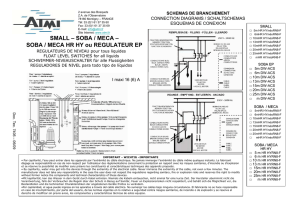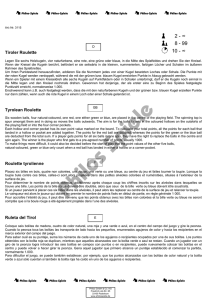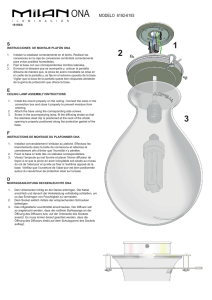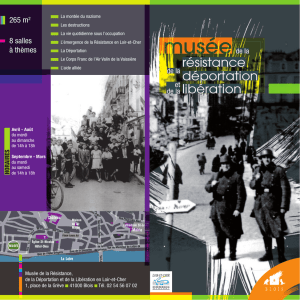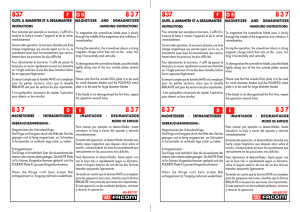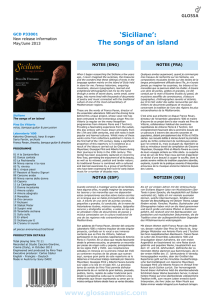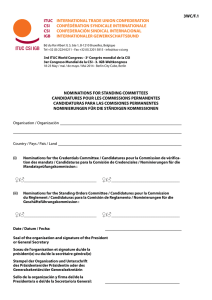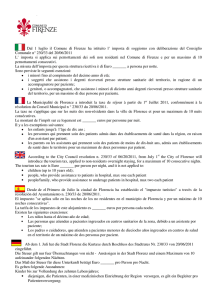valli nostre 2017.qxd #128_valli nostre 2004
Anuncio
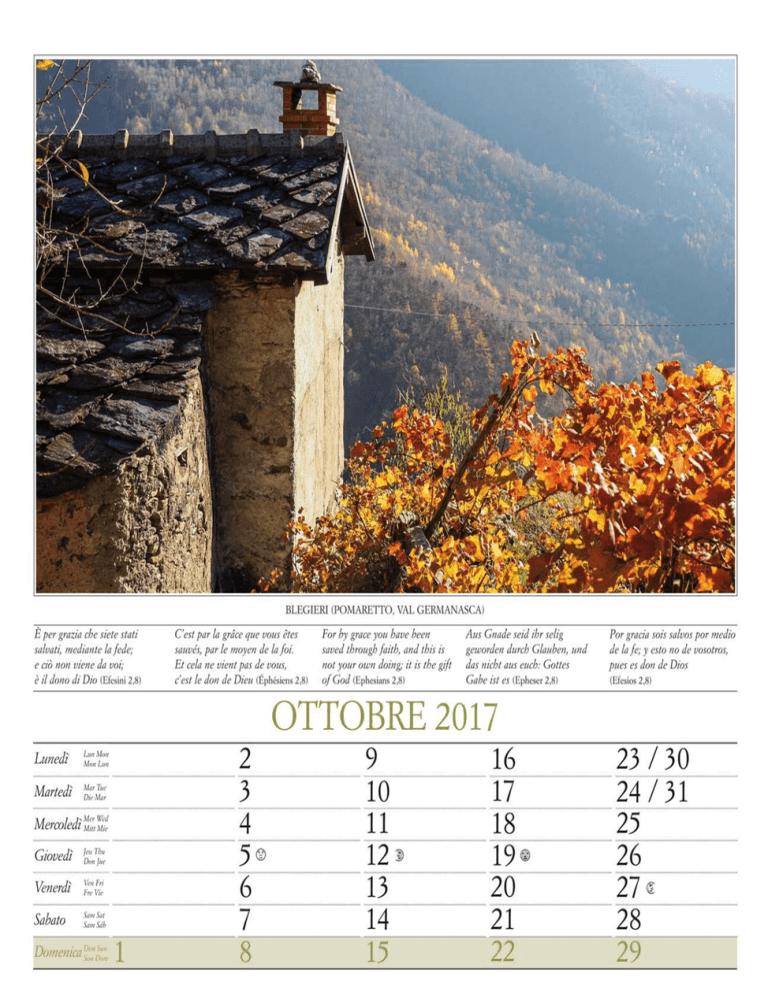
la riforma in italia di Emanuele Fiume I talien wurde von der religiösen Reformbewegung stark betroffen. Zu einem gewissen Teil liegt der Reformation eine landeseigene theologische Betrachtung zugrunde, andernteils wurde sie aus dem Ausland importiert und fand in drei Städten beispielhaften Ausdruck ihrer Eigenheit. Neapel war Schauplatz theologischer Ausführungen jener Gruppierungen Italiens, die an biblischer Geistlichkeit interessiert waren und auf eine Wiedervereinigung der Christenheit vertrauten. Venedig war durch den Handelsverkehr und das Druckereiwesen Tor für die Theologie der Reformatoren jenseits der L ’Italia fu profondamente interessata dal movimento di Riforma religiosa. In parte originata da una riflessione teologica nostrana, in parte importata dall’estero, la Riforma vide in tre città il paradigma della sua particolare vicenda. Napoli fu un centro di elaborazione teologica legato ad ambienti italiani interessati alla spiritualità biblica e fiduciosi in una ricomposizione della cristianità. Venezia, con i suoi commerci e le sue stamperie, fu la porta d’ingresso della teologia dei riformatori d’oltralpe. Lucca rappresentò la ricezione popolare della Riforma importata dai mercanti. Due teologi della Riforma lucchese, Pietro Martire Vermigli e Girolamo Zanchi, si affermeranno tra i maggiori teologi del xvi secolo. Come loro, molti italiani prenderanno la via dell’esilio, consolidando all’estero quella Riforma che i prìncipi italiani avevano rifiutato di sostenere. Le Valli valdesi e la Valtellina saranno le uniche aree in cui la Riforma protestante potrà radicarsi. Alpen. Lucca ist repräsentativ für die Aufnahmebereitschaft des Volkes für die Reformation, die die Kaufleute importierten. Pietro Martire Vermigli und Girolamo Zanchi, zwei Theologen der Reformation in Lucca, gehörten zu den bedeutendsten Theologen des 16. Jahrhunderts. Ebenso wie sie werden viele andere Italiener den Weg ins Exil antreten, um im Ausland jene Reformbewegung zu konsolidieren, die zu unterstützen, sich die italienischen Regenten geweigert haben. Die Waldenser Täler und das Veltlin sind die einzigen Gebiete, in denen die protestantische Reformation Fuß fassen kann. Il Catechismo di Calvino tradotto da G. Domenico Gallo (1551). Prima edizione italiana anonima di scritti di Lutero (1525). I L’Istituzione di Calvino tradotta da G.C. Pascali (1557). L ’Italie fut profondément touchée par le mouvement de la Réforme religieuse. En partie née d’une réflexion théologique propre à notre Pays, en partie importée de l’étranger, la Réforme vécut le paradigme de son histoire particulière dans trois villes. Naples fut un centre d’élaboration théologique lié aux milieux italiens intéressés à la spiritualité biblique et confiants en une recomposition de la chrétienté. Venise, avec ses commerces et ses imprimeries, fut la porte d’entrée de la théologie des Réformateurs transalpins. Lucques représenta la Opera di Calvino in lingua italiana (1561). réception populaire de la Réforme importée par les marchands. Deux théologiens de la Réforme de Lucques, Pietro Martire Vermigli et Girolamo Zanchi, s’affirmèrent parmi les plus grands théologiens du xvi siècle. Comme eux, nombre d’italiens choisirent le chemin de l’exil et consolidèrent à l’étranger la Réforme que les princes italiens avaient refusé de soutenir. Les Vallées vaudoises et la Valtellina furent les seuls lieux où la Réforme protestante réussit à s’implanter. taly was very nearly uprooted by the colossal impact of the Reformation in the 16th century. Partly stemming from local theological discourses and debate, and partly imported from abroad, the Reformation both demarcated and inhabited its own paradigm – most notably within three cities. Firstly in Naples: the main hub of a branch of theological reflection interested in Biblical spirituality and focussed on uniting the Christian Community. Secondly in Venice, with its trade and print shops, the doorway to the Reformation outside of Italy and vice versa, and finally in Lucca, a city that saw the popular reception of the Reformation brought into the town by travelling merchants. Indeed the Reformation theologians Pietro Martire Vermigli and Girolamo Zanchi, residents of Lucca, would go on to be two of the most important theologians of the 16th century. Following their example, many Italians would emigrate, consolidating their newfound beliefs abroad, out of the reach of Italy’s intransigent Princes. The Valli Valdesi and Valtellina, in fact, would be the only areas in the country where the Protestant Reformation genuinely took root. Il Pasquino in estasi, opera satirica di Celio Secondo Curione (1546). I talia fue profundamente afectada por el movimiento de Reforma de la Iglesia. En parte originada por reflexión teológica propia, en parte importada del extranjero, lo cierto es que la Reforma encontró en tres ciudades un ejemplo de sus peculiares vicisitudes. Nápoles fue un centro de elaboración teológica ligado a los ambientes italianos interesados por la espiritualidad bíblica y que confiaban en una reconstitución de la cristiandad. Venecia, con su comercio y sus tipografías, fue la puerta de entrada de la teología de los Reformadores de allende los Alpes. La ciudad de Lucca representó la aceptación popular de la Reforma importada por los mercaderes. Dos teólogos de la Reforma en Lucca, Pietro Martire Vermigli y Girolamo Zanchi, se encuentran entre los mayores teólogos del siglo xvi. Como ellos, muchos italianos emprenderán el camino del exilio, consolidando en el extranjero la Reforma que los príncipes italianos no quisieron apoyar. Los Valles valdenses y Valtelina serán las únicas zonas en las cuales la Reforma protestante logrará echar raíces.
